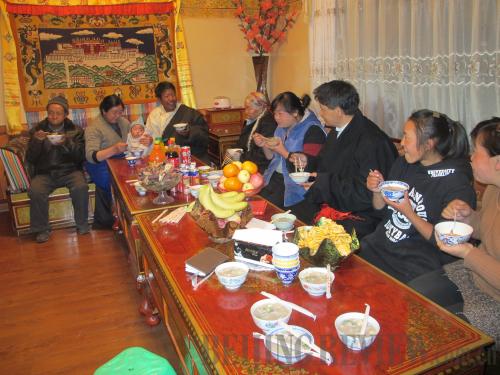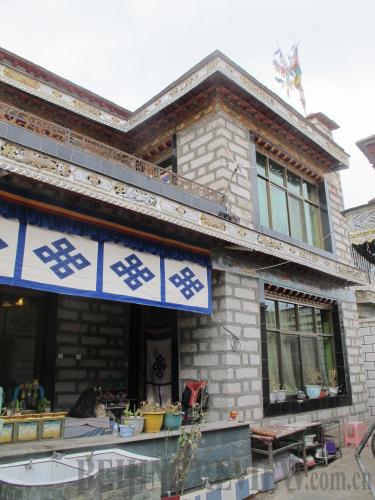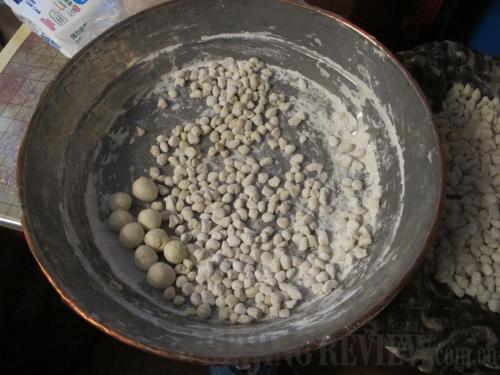|
 |
|
HAPPY GET-TOGETHER: Family members enjoy their gutu thogether in the living room of Mima's home (WANG HAIRONG) |
Celebration of the Tibetan New Year officially starts two days before the Tibetan New Year, which fell on March 2 this year.
On the evening of February 28, at the home of Mima, family members gathered together, first eating gutu, which are boiled flour balls, and then performing an exorcism ritual.
Mima used to be a taxi driver, but he now works as a security guard at a regional government department. His wife runs a store in Lhasa.
Female members of the family, including his wife and sisters-in-law made gutu in their spacious kitchen equipped with modern cookware.
They first made the dough, and then rolled it into a long stick. After that, they broke it into small balls. Nine balls were specially made, each containing one item with a special meaning.
The special stuffings included pepper, salt, black pea, barley, a chunk of glass, woolen thread, charcoal, paper and part of a broom. Some items symbolize good luck and prosperity whereas others suggest certain personality traits of the person who happens to eat that gutu.
At Mima's home, the gutu with special stuffings were mixed together with regular gutu. After the balls were boiled, they are ladled into bowls, and served in the living room. Family members then eat the balls to discover their fortune in the new year.
After the meal, the exorcism ritual was performed. Family members first rubbed chunks of zamba, roasted barley flour, against various parts of their bodies to drive out bad luck. Then a male family member set wheat straw on fire, and carried the torch around the rooms before running out of the house to leave the torch burning at a crossroad. Then, he returned home and the ritual was over. It is said that in the whole process, the torch carrier cannot look back or the ghosts will return.
 |
|
NEW HOUSE: The home of Mima, a Lhasa resident (WANG HAIRONG) |
 |
|
TRADITIONAL FOOD: The larger nine of the gutu are stuffed with items that have special meanings (WANG HAIRONG) | |
